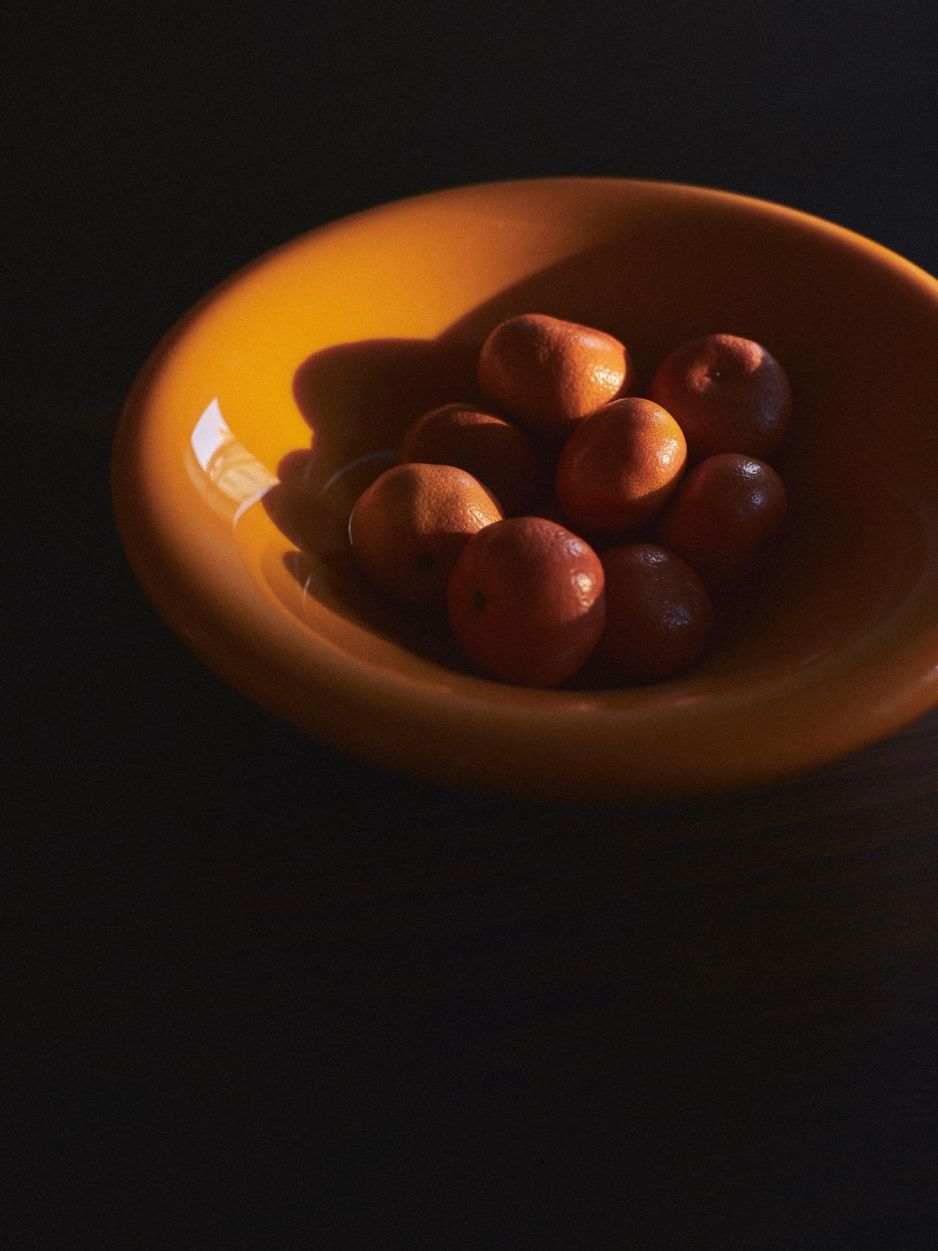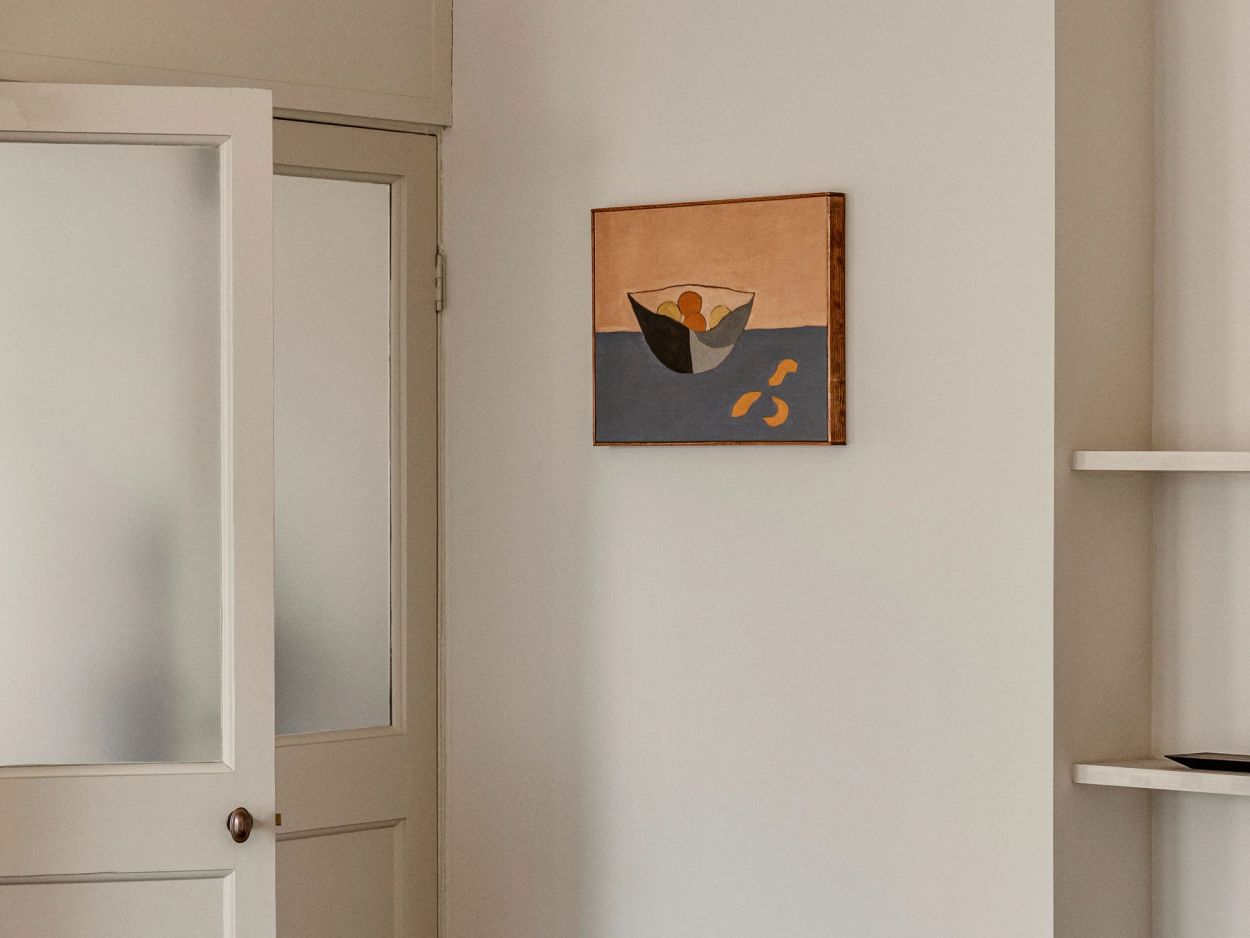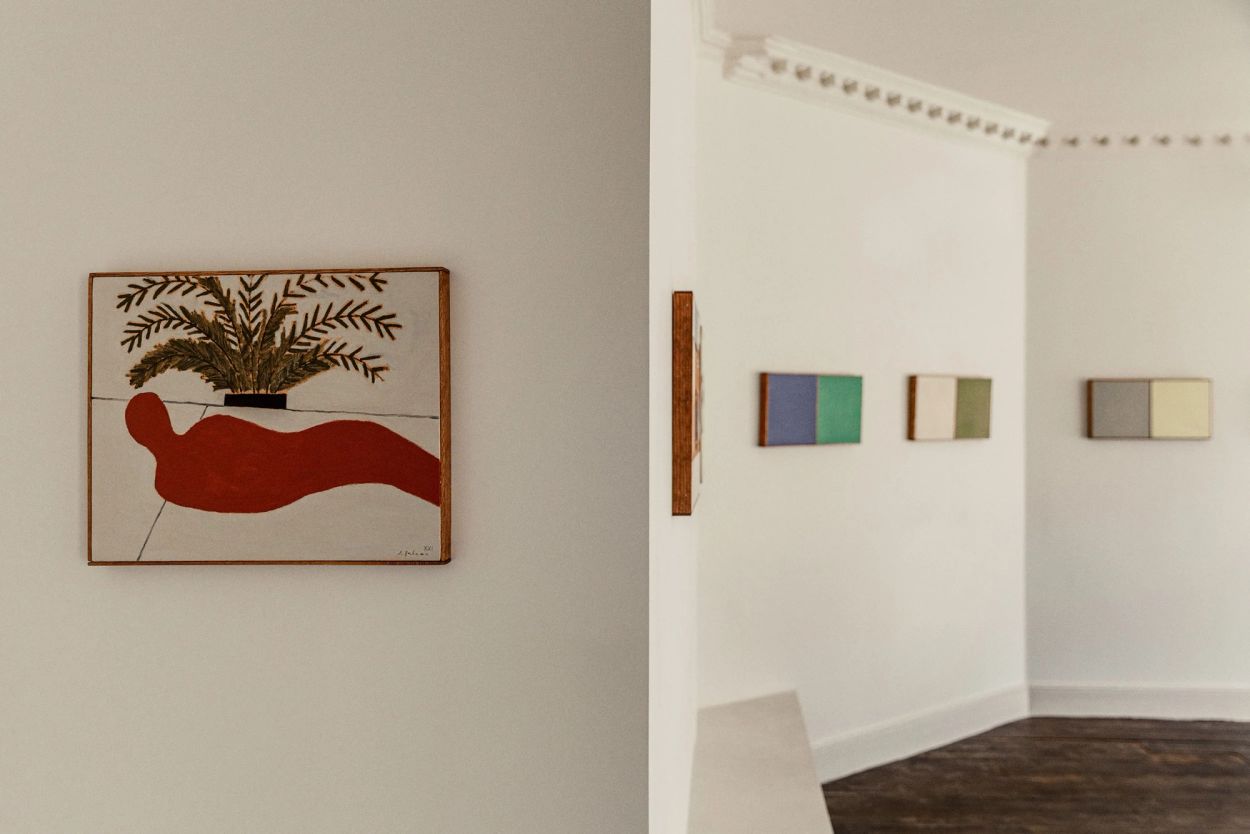John Zabawa: Gateways Apr 15 – Jun 19, 2021
Gateways is Los Angeles-based artist John Zabawa’s first solo show in the UK, featuring 24 oil paintings on canvas and wood. Their warm colours and abstract forms embody two branches of Zabawa’s art practice: a conceptual series of diptychs, and more figurative works, such as still life compositions of geometric fruit bowls and plants.
Zabawa conceived the Gateway diptychs, which juxtapose canvasses painted in bold single colours and rich brush strokes, to reveal a glimpse of the process behind his artmaking. “The way I think about painting is like sculpture: carving away at the excess material until a final form is revealed,” he says. “When I develop a visual idea, I always begin by thinking about two colours. In my experience, the eye recognises colour before it understands form – humans have an immediate, instinctive reaction to colour, and then milliseconds later, they understand what the object is. With these paintings, I aimed to distil scenes or figures into their bare essence, represented by two colours.”
Colour theory partly informs how Zabawa chooses these colours, as do his immediate surroundings. “It could be a red chequered napkin on a white-clothed table, or the green of eucalyptus leaves against the blue sky that catches my eye,” he says. “Recently, I have started creating softer, muted tones, that convey depth and subtlety.”
Representing a scene in its bare essence is a recurring approach throughout the show, apparent in Two Lovers Sleeping – an intimate moment expressed as an elegant geometric composition of cool yellow and green forms and lines. Elsewhere, Zabawa draws on other visual elements of his everyday life, such as branches of eucalyptus leaves held in a vase, or the assortment of objects found on his desk, where a painting within a painting is suggested in the background. “I aim to paint from my own life,” he says. “I believe that as an artist, your own story is truly all that matters.”
The Japanese aesthetic principle of ma – the artistic interpretation of negative space – also informs Zabawa’s work. “I find certain principles help me make sense of my practice, and my understanding of ma is one of them,” he says. “I love thinking of negative space as a tool when composing. I experience blank canvas fear all the time; approaching a new painting is always an exciting, scary feeling, and thinking about negative space in this way is very freeing.”
Zabawa hopes viewers find a visual excitement in his work that may move them to enjoy other art: “I hope my work can help bring people closer to art, and encourage them to make it a part of their lives. I think doing so allows you to see the world in a more beautiful way.”
Words
- Ollie Horne
Photos
- Ash James
Featured works

 Bath Gallery
Bath GalleryJohn ZabawaGateway I, 2020

 Bath Gallery
Bath GalleryJohn ZabawaEucalyptus at Dawn, 2021
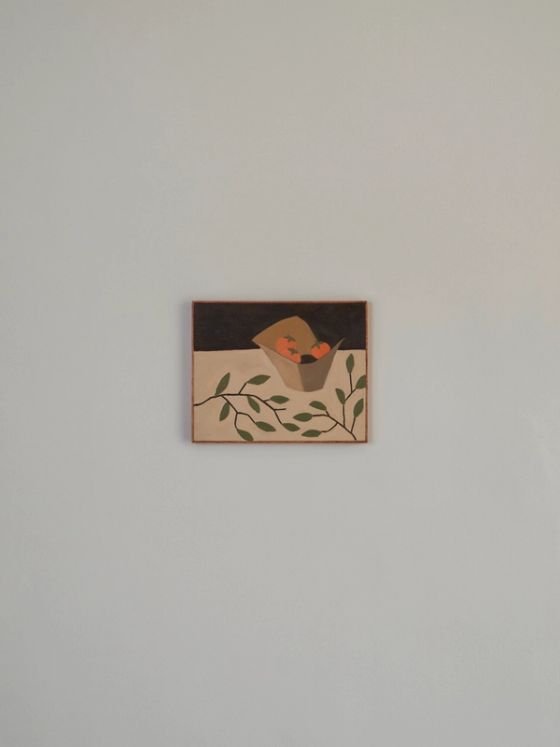
 Bath Gallery
Bath GalleryJohn ZabawaPersimmons, 2021

 Bath Gallery
Bath GalleryJohn ZabawaGateway VII, 2020
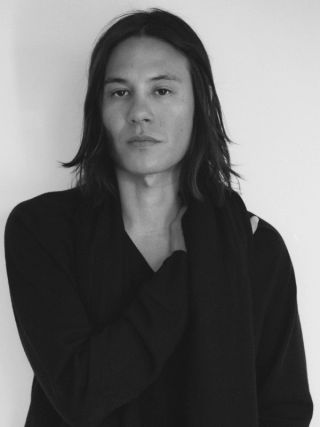
Spanning minimalist presentations and classical still lives, painter John Zabawa is not married to any school or style – instead, he seeks the best way to convey his message, to express something of himself and his process.
Related exhibitions

Although Korea is known as ‘The Land of Morning Calm’, this name is a mistranslation. The result of ancient Korean, and its spoken dialects, haphazardly translated into Chinese characters many centuries ago, the sobriquet more faithfully speaks to the instability of meaning and its susceptibility to time and place. Francis Gallery’s inaugural show, Morning Calm, takes this ambiguity as a point of entry into the idea of Korea, and its multitudes. In the exhibition, six artists of Korean and Korean American descent explore Korea and Koreanness as composites of memory, imagination, history, and feeling. Produced by artists at different stages of their careers, working in both Korea and the United States, the artworks reinterpret traditional Korean objects, materials, techniques, and rituals in modern, hybrid expressions.

Illuminations can be both literal and metaphorical; one can illuminate with light or with knowledge. The latest body of work by the American painter, John Zabawa, developed out of this double meaning, their painted surfaces radiate outwards, their colours shimmering like the edges of the sun.

It is a hot, late September morning—quite typical of early autumn in California, but still tangibly at odds with the deepening quality of the light. I thread between lived-in Echo Park residences to climb the narrow stairs to John Zabawa’s studio, a small converted two-bedroom house that fits neatly within the domestic vernacular of the neighborhood. A pot is boiling on the stove of the kitchenette to make a cup of tea. Somehow, this detail, however slight, feels essential to the context—the paintings that rim the rooms are small domestic scenes: a flower arrangement, a plant, a portrait of a friend, a plate of lemons, a bottle of wine flanked by two half-filled glasses. Perched on a disused radiator, a platter holds nine lemons, unfussily arranged, their peels beginning to tarnish slightly the way peels do when left to the elements.


